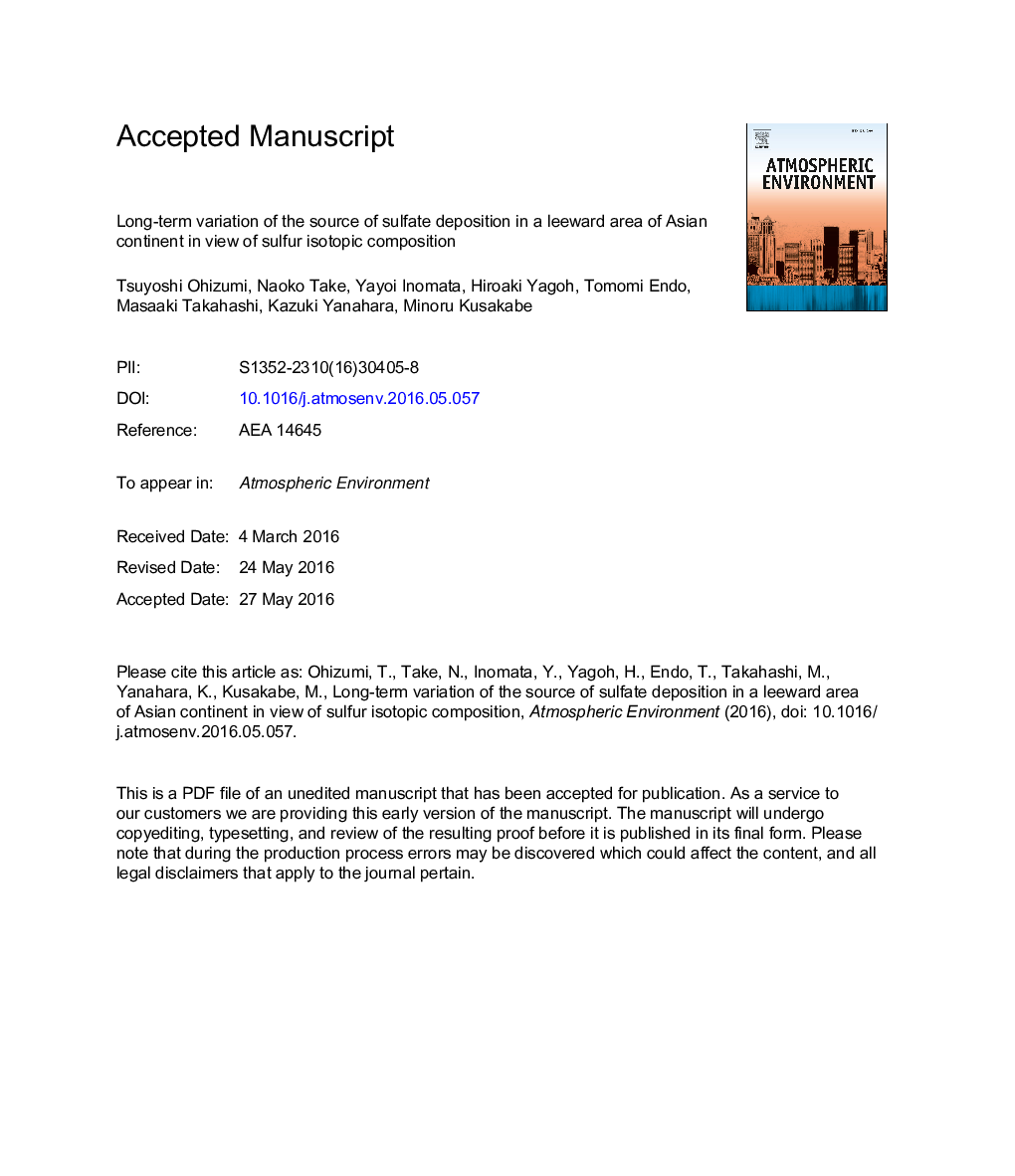| کد مقاله | کد نشریه | سال انتشار | مقاله انگلیسی | نسخه تمام متن |
|---|---|---|---|---|
| 6336140 | 1620334 | 2016 | 34 صفحه PDF | دانلود رایگان |
عنوان انگلیسی مقاله ISI
Long-term variation of the source of sulfate deposition in a leeward area of Asian continent in view of sulfur isotopic composition
ترجمه فارسی عنوان
تغییرات درازمدت منبع رسوب سولفات در یک ناحیه ای از قاره آسیا با توجه به ترکیبات ایزوتوپ گوگرد
دانلود مقاله + سفارش ترجمه
دانلود مقاله ISI انگلیسی
رایگان برای ایرانیان
کلمات کلیدی
نسبت ایزوتوپهای گوگرد، سولفات، رسوب اسیدی، احتراق زغال سنگ، شمال شرقی آسیا،
موضوعات مرتبط
مهندسی و علوم پایه
علوم زمین و سیارات
علم هواشناسی
چکیده انگلیسی
A large emission of air pollutants from the Asian continent has caused transboundary air pollution, especially in northeastern Asia. This paper evaluates sulfate deposition at a leeward area of Asian continent, i.e., the Nagaoka observation station located along the Sea of Japan. We have monitored atmospheric sulfate deposition and its sulfur isotopic ratio for 28 years at the station. The sulfur isotopic ratios of non-sea-salt sulfate (δ34Snss) ranged from 0.0 to +6.2â°. The isotopic ratios of local emission and Chinese coal sulfur showed negative and positive values, respectively. Several statistically significant trends were detected on the deposition of non-sea-salt sulfate (nss-SO42â) during the study period. The decrease of nss-SO42â deposition since the middle of 1980s was considered to have been caused by local anthropogenic SO2 emission that showed relatively low δ34Snss values during the period. The increase of nss-SO42â deposition from the end of 1990s to the second half of 2000s was interpreted to have been caused by the change in SO2 emission in China because the δ34Snss values increased during the period with the winter values getting closer to the averaged value of Chinese coal sulfur. The decreasing trend of nss-SO42â deposition from the middle of 2000s was likely affected by reduction of Chinese SO2 emission judging from the decrease in δ34Snss values in the period. Mass balance calculations suggested that sulfur released by coal combustion in China during 1990s contributed by about 40% of annual total sulfur deposition in Nagaoka, and its contribution increased up to 60% in the middle of 2000s. The contribution turned to decrease after that peak, which was in harmony with the temporal change of emission from China.
ناشر
Database: Elsevier - ScienceDirect (ساینس دایرکت)
Journal: Atmospheric Environment - Volume 140, September 2016, Pages 42-51
Journal: Atmospheric Environment - Volume 140, September 2016, Pages 42-51
نویسندگان
Tsuyoshi Ohizumi, Naoko Take, Yayoi Inomata, Hiroaki Yagoh, Tomomi Endo, Masaaki Takahashi, Kazuki Yanahara, Minoru Kusakabe,
